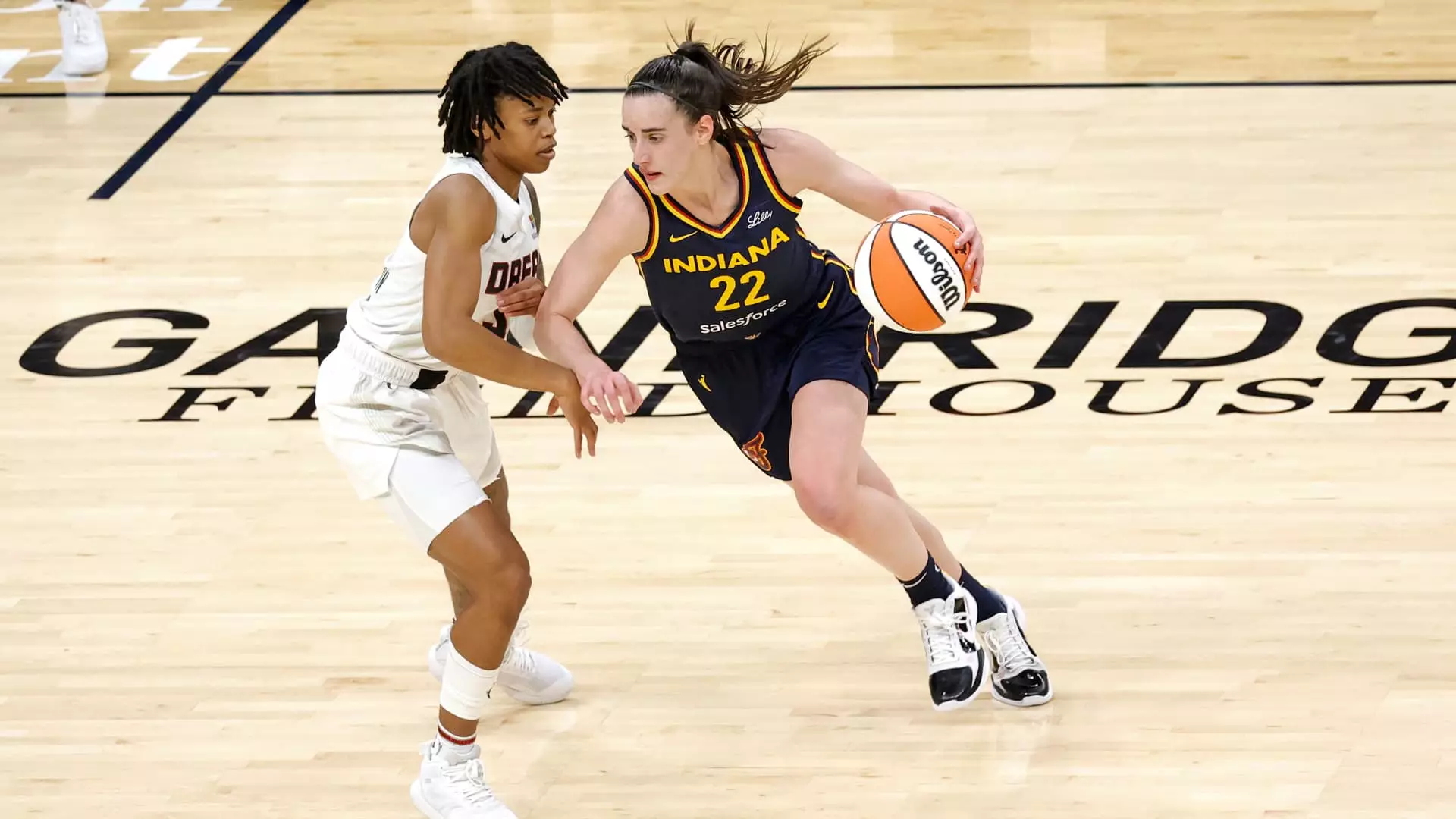The 2024 season of the Women’s National Basketball Association (WNBA) marked a historic milestone as it experienced unprecedented growth in viewership and attendance. According to the league’s data, this season attracted over 54 million unique viewers across various platforms such as ABC, ESPN, CBS, and NBA TV, establishing a new record for the league. The surge in interest was not just a fleeting phenomenon; rather, it can be traced back to the emergence of exciting young talents like Caitlin Clark and Angel Reese, who captivated audiences and reinvigorated fan engagement.
In terms of attendance, the WNBA witnessed its highest numbers in over 22 years, reflecting a nearly 50% increase from the previous season. The 2024 season had an impressive tally of 154 sellout games, a significant jump from the 45 sellouts recorded in 2023. This remarkable growth underscores a profound shift in fans’ perceptions of women’s basketball, signaling a newfound respect and enthusiasm for the sport.
The influence of rookie sensations such as Clark and Reese cannot be overstated. Caitlin Clark, playing for the Indiana Fever, and Angel Reese of the Chicago Sky, emerged as game-changers for their respective teams. Their high-impact performances not only contributed to the teams’ successes but also drew massive crowds, as evidenced by Fever’s staggering rise in attendance—over fourfold compared to the previous year. The excitement surrounding these young athletes has triggered a domino effect, positively affecting the entire league’s popularity.
As the Las Vegas Aces aimed for their third consecutive championship, fans were treated to thrilling games and breakout performances. The presence of such dynamic players engaged seasoned fans while simultaneously attracting new audiences, suggesting that the league has tapped into a rich vein of talent that bodes well for its future.
Despite the palpable excitement, the WNBA faces challenges that cannot be overlooked. As the viewership numbers swelled, reports surfaced regarding increased online harassment directed at players, particularly surrounding issues of racism and hostility. Commissioner Cathy Engelbert’s initial response to these alarming trends was met with mixed reactions, as stakeholders in the league called for a more robust stance against such vitriol. Engelbert later clarified her position, stating her opposition to hate and racism, but the initial hesitation raised concerns about the league’s readiness to confront toxic behaviors in its growing digital platform.
While a thriving viewership might seem purely positive, the undercurrents of negativity signal that further work is necessary to create a safe and inclusive environment for players and fans alike.
The WNBA’s burgeoning popularity has translated into significant financial opportunities, as showcased by a recent $2.2 billion media rights deal spanning 11 seasons, which includes a revision of terms after the 2028 season. This agreement, achieved within the larger context of an extensive $77 billion NBA media deal, illustrates how the WNBA has gained leverage as its viewership numbers soar.
During the 2024 campaign, 22 regular season games on television averaged over 1 million viewers, a testament to the expanding audience base. Several matches shattered existing viewing records, with ESPN reporting that the regular season achieved an average view rate of 1.19 million—an astounding 170% increase from the 2023 season. The league’s playoff games continued to attract viewers, and anticipation grows as more fans tune in to see how the postseason unfolds.
As the WNBA announces plans to expand, adding a 15th team in Portland by the 2026 season, the league stands at a pivotal crossroads. The momentum of the current year offers great promise, but concurrently, it necessitates a commitment to addressing societal issues affecting players. Continued engagement in meaningful conversations about racism, harassment, and player safety is essential as the league navigates its way through this era of growth.
The WNBA’s 2024 season reflects an exhilarating chapter marked by record-breaking achievements and deep-rooted challenges. As the league forges ahead, it is crucial that it not only celebrates its success but also confronts the pressing issues that accompany such rapid growth in visibility. The future looks promising, but it must be approached with both ambition and responsibility.

